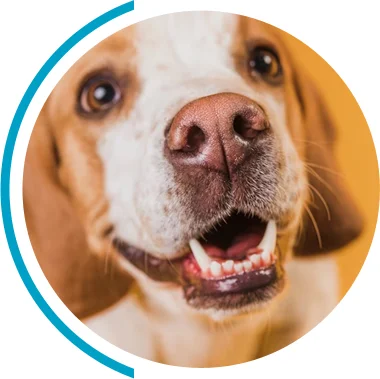Separation anxiety in dogs is a prevalent issue that affects many pet owners, particularly in bustling urban areas like Costa Mesa. Understanding this condition is crucial for ensuring the well-being of your canine companion. This article will explore the nuances of dog separation anxiety, its training methods, and how professional services can assist owners in overcoming this challenge.
Dog separation anxiety occurs when a dog experiences extreme distress upon being left alone. It can manifest in various ways, and understanding its symptoms and causes is essential for effective intervention. This condition not only affects the dog’s well-being but can also create stress for the owner, leading to a challenging dynamic in the pet-owner relationship.
The symptoms of separation anxiety can range from mild to severe and may include excessive barking, destructive behavior, and even attempts to escape. Common signs to watch for include:
Recognizing these behaviors is the first step toward helping your dog cope with this anxiety. In some cases, dogs may also exhibit signs of distress when they sense their owner is preparing to leave, such as following them around or becoming overly clingy. This anticipatory anxiety can make it even more challenging for both the dog and the owner, as the dog may become increasingly agitated as the departure time approaches.
Understanding the underlying causes of separation anxiety is crucial for effective training. Several factors can contribute, including:
Identifying these triggers can help tailor the training approach to your dog’s specific needs. Additionally, dogs that have been adopted from shelters or have experienced abandonment may be particularly susceptible to separation anxiety, as their past experiences can leave lasting emotional scars. Understanding these factors not only aids in addressing the anxiety but also fosters a deeper bond between the dog and owner, as the owner learns to provide the necessary support and reassurance during times of distress.
Training is a vital aspect of managing separation anxiety in dogs. It not only equips them with the skills to cope with being alone but also reinforces the bond between the dog and its owner.
Training provides numerous benefits, including:
Through consistent training efforts, dogs can learn to feel secure and reduce their anxiety when left alone. Additionally, engaging in training sessions can serve as a form of mental stimulation, which is crucial for a dog’s overall well-being. Dogs thrive on routine and mental challenges, and incorporating training into their daily lives can help fulfill these needs. This not only aids in reducing anxiety but also contributes to a more balanced and happy pet.
Training not only alleviates the symptoms of separation anxiety but also addresses the root causes. A well-structured training program promotes a sense of safety and predictability, which is crucial for an anxious dog. Furthermore, training can introduce positive reinforcement techniques that reward calm behavior, helping dogs associate being alone with positive experiences rather than fear or distress.
Implementing training techniques can help desensitize your dog to triggers that cause anxiety, fostering a calmer demeanor when faced with solitude. For instance, gradually increasing the time spent apart during training sessions can help dogs adjust to longer periods of separation. This gradual exposure, paired with comforting items such as toys or blankets that carry the owner’s scent, can significantly ease the transition and create a more secure environment for the dog. As dogs learn to trust that their owners will return, they can develop a healthier perspective on being alone.
Various training techniques can effectively combat separation anxiety in dogs. Understanding these methods will allow owners to select the best approach for their pets.
Positive reinforcement training encourages desired behaviors by rewarding your dog for good actions. This method is particularly effective for dogs with separation anxiety, as it promotes a sense of security. Using treats, praise, or toys as rewards can reinforce calm behavior when you leave and return home.
Start with short departures and gradually increase the duration as your dog becomes more comfortable. This creates a positive association with your absence.
Counter-conditioning involves changing your dog’s emotional response to being alone. It entails presenting the dog with a pleasurable experience during times of separation, helping them associate solitude with positive feelings. This can be done by providing special toys or treats only available during your absence.
Desensitization involves gradually exposing your dog to outcomes of being alone, starting with brief separations and progressively increasing the duration based on their comfort level. Both methods require patience and consistency for success.
If home training methods are insufficient, seeking professional dog training services in Costa Mesa can provide additional support. Professionals are trained to handle various behavior issues, including separation anxiety.
When selecting a dog trainer, consider their experience with separation anxiety. Look for trainers who utilize positive reinforcement techniques and have a solid track record of success. Researching reviews and testimonials can also provide insights into their effectiveness.
It is crucial that the trainer aligns with your training philosophy and is capable of customizing the approach to your dog’s unique situation.
Initially, professional training sessions often focus on building a trust relationship between the trainer and your dog. Trainers may evaluate your dog’s behavior and introduce techniques tailored to its needs. Owners typically participate in sessions to learn and practice methods that can be applied at home.
Training will likely involve a combination of practical exercises, guidance on managing triggers, and ongoing support to ensure progress is maintained.
Training is often just the beginning of managing separation anxiety effectively. Consistent maintenance practices are necessary to reinforce the training and ensure lasting results.
Establishing a daily routine is fundamental to helping your dog feel secure. Predictable schedules for feeding, walks, and playtime instill confidence in your pet, reducing anxiety levels.
Consistency in applying training techniques will yield the best results. Make sure all family members understand and follow the same approach to avoid confusing the dog.
There are various resources available to support dogs with separation anxiety, including interactive toys, calming products, and supplements. Consider employing calming aids, such as anxiety wraps or calming music, to create a soothing environment during separation.
Additionally, keeping your dog mentally stimulated through regular exercise and play can alleviate anxiety levels and improve overall well-being.
Through understanding, effective training, and ongoing support, managing separation anxiety in dogs can lead to happier lives for dogs and their owners alike in Costa Mesa.
If you’re feeling overwhelmed with your dog’s separation anxiety, remember that you’re not alone. At The Grounded Hound Canine Coaching, we understand the challenges you face and are here to provide the support and guidance you need. With our extensive certifications, including CTC, ABCDT, CSAT, and SA Pro, we’re equipped to offer positive, effective training methods tailored to your dog’s unique situation. Our approach is grounded in Patience, Kindness, and Consistency, ensuring a compassionate and understanding experience for both you and your canine companion. Don’t let separation anxiety disrupt the harmony in your home. Contact Us Today and take the first step towards a happier, more grounded life with your dog.

